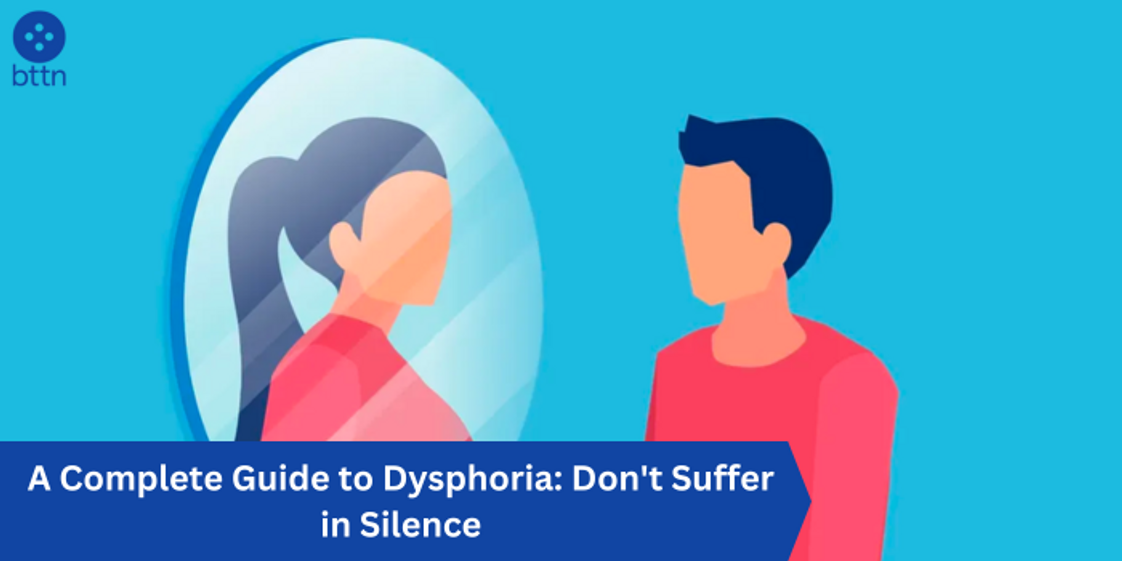
A Complete Guide to Dysphoria: Don't Suffer in Silence
Posted by Pankaj Dhiman on Feb 1st 2024
Dysphoria. It's a term thrown around online, whispered in support groups, but rarely fully understood. Yet, for many individuals, it's a daily reality, a storm of discomfort and distress related to their identity. This comprehensive guide aims to shed light on dysphoria, its various forms, and empower you to navigate its complexities.
Must Read: Iron Pills: Side Effects and Benefits of Supplements for Optimal Health
Understanding Dysphoria: Beyond the Basics
Dysphoria, in its simplest form, is a deep sense of dissatisfaction or unease with something inherent to oneself. It's not merely dislike; it's a pervasive disconnect between your internal identity and the way you exist in the world. While often associated with gender dysphoria, it can manifest in various forms, including:
- Gender Dysphoria: A profound incongruence between your gender identity and your assigned sex at birth. This can encompass physical characteristics, social expectations, and even internal sense of self.
- Body Dysphoria: Distress rooted in perceived flaws or imperfections in your physical appearance. It can be specific to certain body parts or encompass your entire image.
- Social Dysphoria: Discomfort or anxiety arising from social interactions due to perceived differences in identity, background, or ability.
- Species Dysphoria: For individuals who identify as otherkin, a disconnect between their internal sense of belonging to a non-human species and their physical reality.
Must Read: How to Choose the Right Doctor for You
Recognizing the Signs: When Discomfort Becomes Dysphoria
Dysphoria can be a complex tapestry woven with emotional, cognitive, and even physical threads. Here are some signs to watch for:
- Intense distress: A persistent feeling of unease, anxiety, or sadness related to your identity or body.
- Dissociation: Feeling disconnected from your body or surroundings due to the perceived incongruence.
- Obsessive thoughts: Fixating on perceived flaws or the discrepancy between your internal and external self.
- Avoidance: Shrinking away from situations or activities that trigger dysphoria.
- Self-harm: In extreme cases, individuals may resort to self-harming behaviors as a way to cope with the distress.
Remember, dysphoria is not a choice or a mental illness. It's a valid experience deserving of understanding and support.
Must Read: Healthcare Data Security: Ensuring Patient Privacy in a Digital Era
Seeking Help and Finding Your Path
If you're struggling with dysphoria, know that you're not alone. Here are some resources to help you navigate this journey:
- Talk to a trusted friend, family member, or therapist. Sharing your experience can be incredibly validating and help you access further support.
- Connect with online communities or support groups. Surround yourself with individuals who understand and can offer empathy and advice.
- Explore gender identity resources. If you're questioning your gender identity, numerous organizations provide support and information.
- Seek professional help from a therapist or counselor. They can equip you with coping mechanisms, explore treatment options, and guide you on your path to self-acceptance.
Remember, healing and acceptance are journeys, not destinations. Be patient with yourself, celebrate your victories, and seek help when needed. You deserve to live authentically and free from the burden of dysphoria.
Beyond the Individual: Creating a Supportive World
Understanding dysphoria goes beyond personal experiences. As a society, we can create a more inclusive and supportive world by:
- Educating ourselves and others about dysphoria and its various forms. Challenge stereotypes and assumptions, and embrace diverse identities.
- Using inclusive language and respecting individual pronouns. This simple act shows respect and validates a person's identity.
- Advocating for policies that protect and empower individuals facing dysphoria. This includes access to healthcare, safe spaces, and legal protections.
- Creating open and accepting communities where individuals feel safe to express themselves authentically. Let's stand together and celebrate diversity.
Remember, even small acts of kindness and understanding can make a world of difference for someone struggling with dysphoria. Let's create a world where everyone feels comfortable and empowered to be their true selves.
Additional Resources:
- The Trevor Project: 1-866-488-7386 (US)
- National Center for Transgender Equality:https://transequality.org/
- The Jed Foundation:https://www.jedfoundation.org/
- The National Eating Disorders Association:https://www.nationaleatingdisorders.org/
By sharing this information and advocating for inclusivity, we can help individuals experiencing dysphoria find their voice, embrace their authentic selves, and live fulfilling lives.
